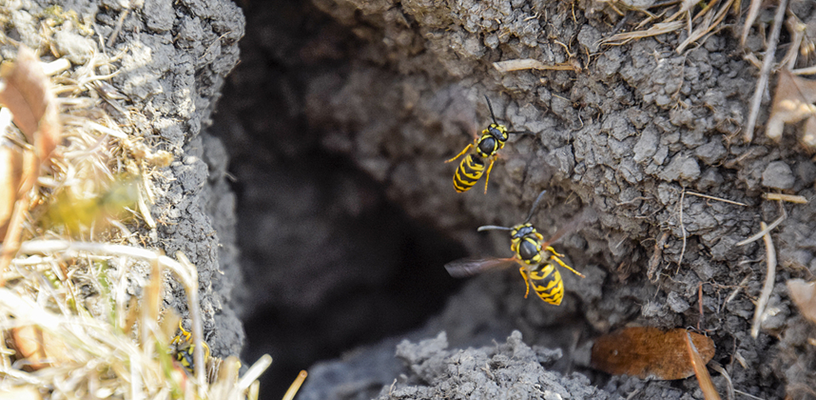
- By Phyllis B. Smith
- Posted Tuesday, July 21, 2020
Be on the Lookout for Yellowjacket Nests!
The yellowjacket nest that was discovered during your last mowing adventure has actually been there for several months. Nests are frequently constructed in the ground during the spring and the few workers initially produced by a single queen usually go unnoticed at first. As future generations mature, the colony may expand to include thousands of additional workers by mid-summer, with increased capacity to guard the nest from perceived threats. To protect oneself from future stings, scan the lawn for signs of activity prior to cutting the grass. The same goes for that “perfect” picnic spot. Look around and keep a lid on those sugary soft drinks, a favorite of roving yellowjackets. Workers also collect protein to feed developing larvae, so when not vying for your chicken wings at the next family outing, yellowjackets serve as a beneficial source of control for other insect pests, which is why nests that don’t present a safety hazard to people or pets can simply be left alone to die out naturally during the winter. For more information on yellowjackets and other stinging insects see the NC State Extension publication Non-Honeybee Stinging Insects in North Carolina.






